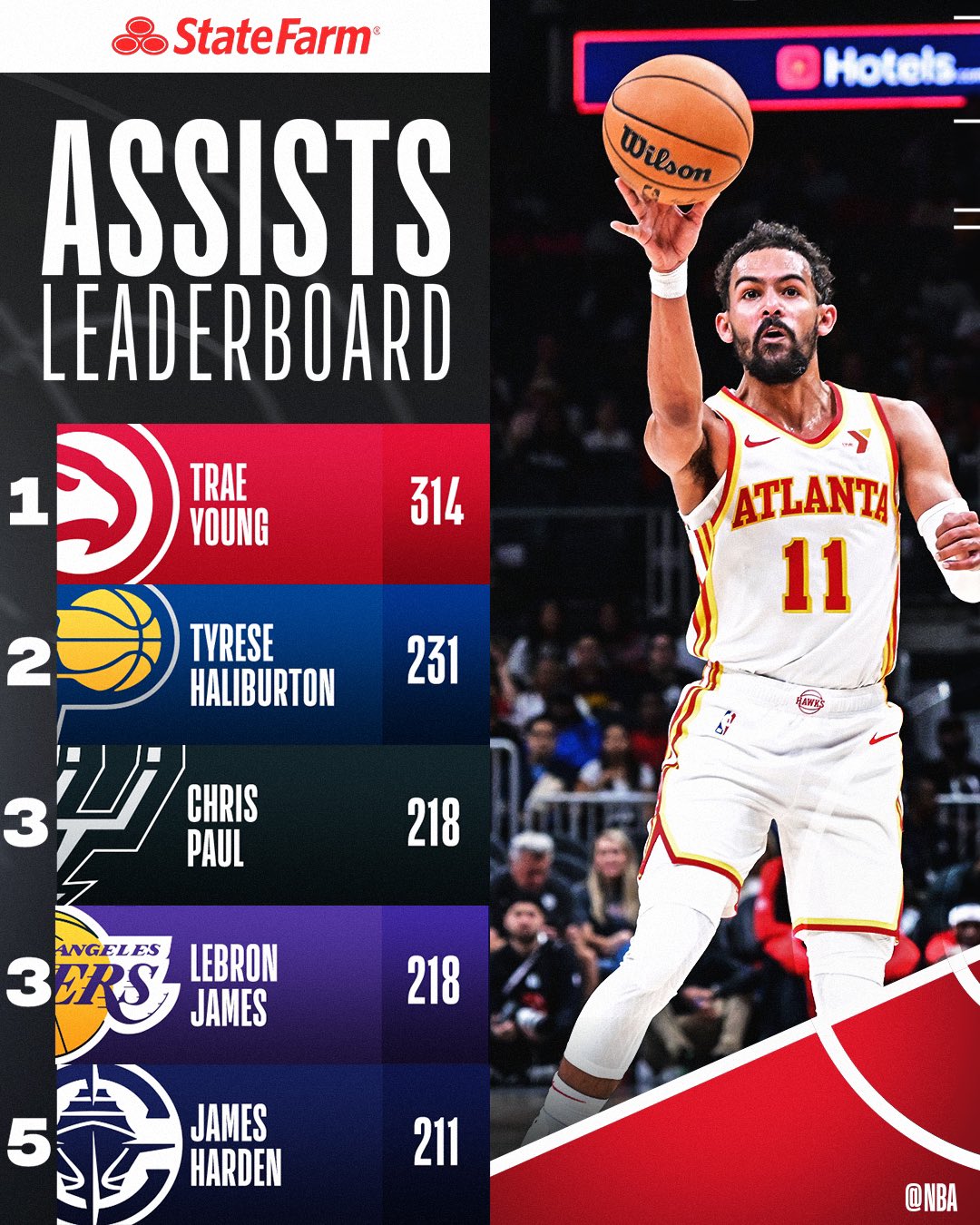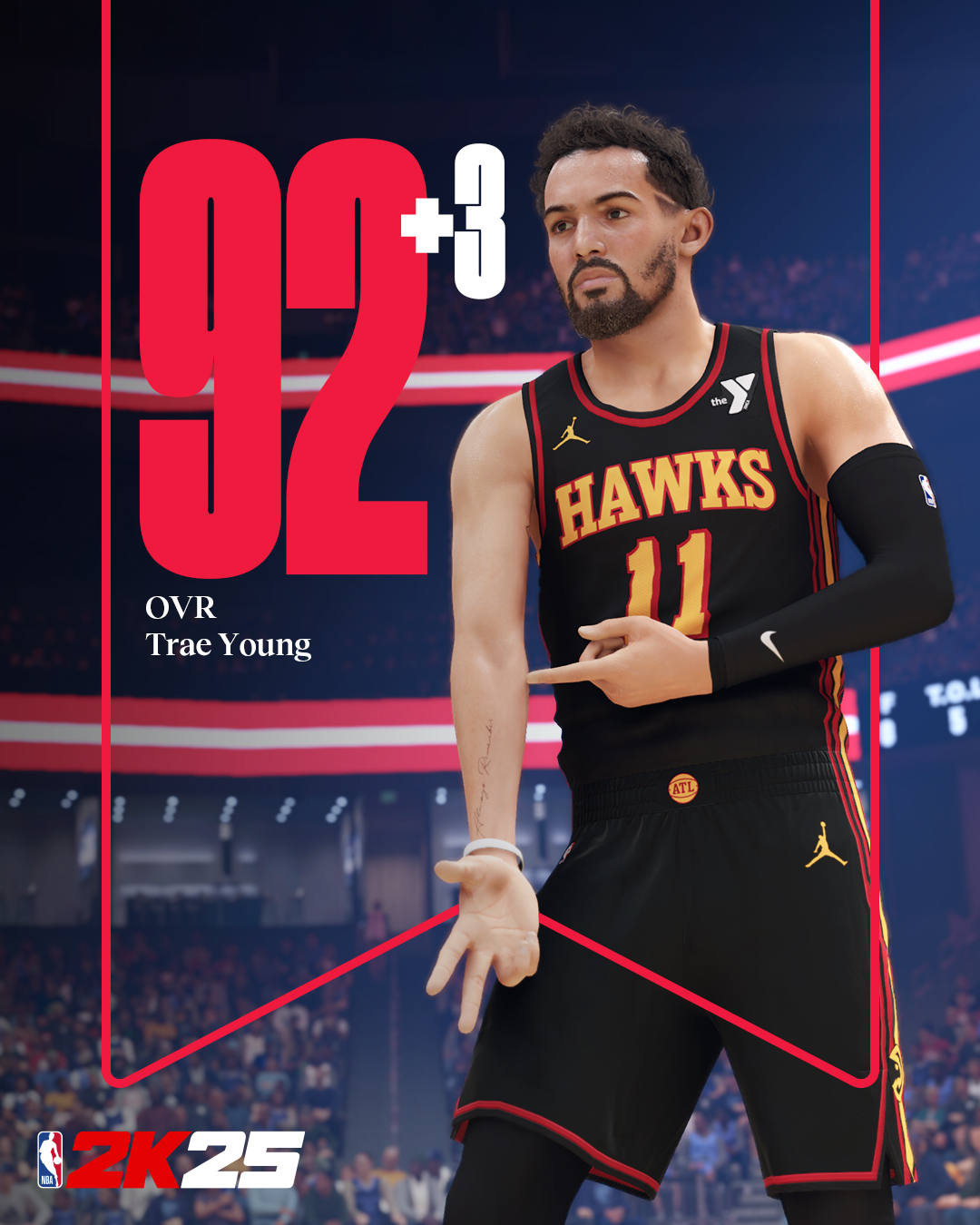The approach has led to some of the most gaudy numbers of Young’s career. He’s had three 20-assist games and a 19-assist night this season. His only other 20-assist game before that was when Philadelphia rested its starters against Atlanta in one of the last games of the 2022-23 season.
Young is doing this on one of the worst shooting teams in the league, averaging 21.0 potential assists entering Thursday. His lead over second-place Nikola Jokić is the largest in NBA Stats’ 12 years of tracking data.
“If you’re really good at something, you do it,” Snyder said. “The thing for him though is the ability to be good at a lot of things. His understanding of that allows him to trust a possession, that the ball needs to come back to him.”
Young no longer walks the ball up the floor; he kicks it ahead to any open player. Then, Young or Johnson, whoever is closest, will go to the ball, and they will improvise off of each other.
This has cut out a lot of the stagnant fluff from Atlanta’s offense and keeps everyone engaged.
“Our big-small pick-and-roll that me and him run, that’s been effective for us,” Johnson said. “I just try to be the connector when he gets off it quick. ’Cause at the end of the day, we want to keep the ball moving.”
Young passes it to Johnson 13.9 times per game, the most frequent connection with a teammate in Young’s career, per NBA Stats. Also, Johnson passes it to him 26.5 times per game, which is by far the most in Young’s career.
There are usually a couple of segments during the game when they don’t need to pass it to each other to create an easy bucket. Most teams are running inverted ghost screens now, where a big wing handles the ball and a guard sprints by his defender to cause brief confusion.
Since Young is not exactly a solid screener, he typically runs a ghost screen as he sprints behind Johnson’s defender, which allows Johnson an opening to attack. Because Murray and Young are both good pull-up scorers in isolation, a lot of target pick-and-rolls — where they hunt a mismatch — slowed the offense. Johnson needs to get downhill to be effective, so he is looking for a screen to just open his defender’s hips a few microns and then fire up the afterburners.
Young typically pulls his defender past the 3-point line to give Johnson room to play 4-on-4. At Johnson’s height, he just needs a little extra space to pass over the top of the defense, and Young removing a defender from the play makes it work.
Johnson broke out last season by becoming one of the league’s best playmakers out of the short roll. Young would draw a double off of his screens and then thread it to Johnson in the midrange so the big man could attack the paint with a numbers advantage. It’s gone a step further, as Young just gives the ball to Johnson and lets him run the same action while pulling his defender out of the play.
“He just allows me to be me,” Johnson said. “Trae creates so much attention and draws so much attention, so he allows me to just go out there and be myself.”
Now that the Hawks can put together lineups full of tall, athletic playmakers, it’s much easier for Johnson to run the offense while Young’s gravity pulls the help defenders out of the way. The next step for Young is to remain actively engaged once he steps out of the action, becoming an emergency passing outlet when the play goes nowhere. It happens at times, but not enough.
And that’s the catch with Atlanta. They are still inconsistent, alternating winning and losing streaks that keep the Hawks from jumping to the top half of the East. A big part of it is that they are one of the worst shooting teams above the break with Young shooting just 34.4 percent from there. Consequently, they rank 27th in 3-point shooting allowed, so the math game just crushes them in most games.
But Snyder is still encouraging his players to shoot with a simple acronym.
“LTFF: Let that f—er fly,” Nance said. “We put in so much work with our shots that we deserve the right to shoot it. For me, that has done a number on my offensive mentality, and the numbers back that up.”
The veteran big was shooting 52 percent from beyond the arc this season before fracturing his right hand. De’Andre Hunter moved into the sixth-man role and is shooting a career-high 42.5 percent, having the best season of his career. But their other core rotation players are all shooting well below the league average, and it’s just hard to win consistently that way.
It’s a reminder that while the Hawks are ahead of schedule in their rebuild, they can’t skip steps on the path back toward contention. Of course, Young always believed this would work once Snyder laid it all out for him.
“Just because everyone else had (low) expectations doesn’t mean I had those or we had those as a team,” Young said. “So I feel like we’re on track with what we set our goals out to be and I think we’re doing well right now. We’re not overachieving in our eyes.”
Young bought into the program but is extension-eligible this summer and will want a max deal as he enters his prime. It’s hard to imagine their offensive system working without an elite point guard like Young, but there are few times in the past 40 years that a team won a title with its best player being a defensive liability.
The Hawks have a crowded roster and will likely make more moves. Whether they want to find more minutes to develop their recent draft picks or go all in on a playoff run, the first half of this season proves there is a path forward with Young at the helm.











